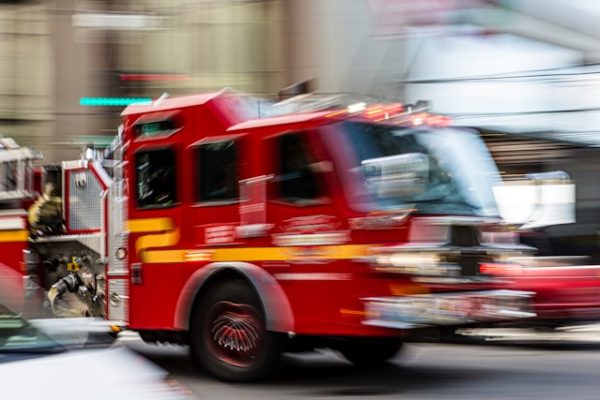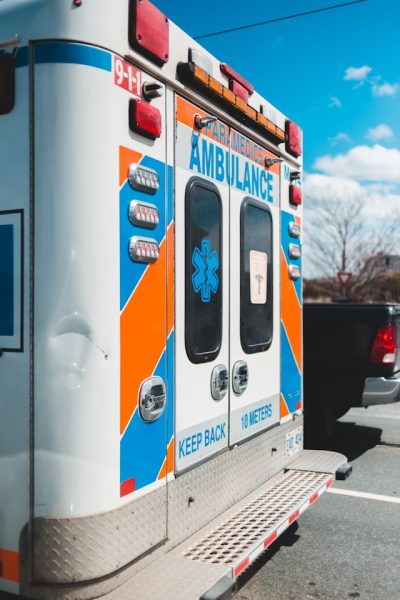We all want to believe that when something goes wrong, when a loved one collapses, when a fire breaks out, or when an accident leaves someone pinned behind a wheel, emergency responders will arrive in time. But the truth is, sometimes they don’t. And in many cases, it’s not because emergency teams failed. It’s because the people around them, drivers like you and me, got in the way.
In the US, emergency medical services in cities average a seven-minute response time. That may not sound like much, but when every minute counts, it can be the difference between life and death. In rural areas, the wait can stretch beyond 14 minutes. Some 4.5 million Americans live in so-called “ambulance deserts,” where a 25-minute wait isn’t unusual. And what is even more worrying is that just a five-minute delay in medical response can increase fatal crash fatality rates by nearly 46%.
So why aren’t emergency services faster? It’s not always underfunding, or lack of staff, or faulty GPS. Sometimes, it’s traffic. Sometimes, it’s a car that won’t move over. Sometimes, it’s a parking mistake that blocks a gurney from rolling out. The truth is, a lot of delays come down to one thing: drivers not paying attention, or worse, not caring.

The Impact of Traffic Congestion
Congested roads are a constant headache for first responders, especially in cities where there’s simply nowhere for vehicles to go. Even with lights flashing and sirens blaring, weaving through bumper-to-bumper traffic is difficult and dangerous. Every car that hesitates, every driver who doesn’t pull over properly, adds seconds, then minutes.
Interestingly, during the COVID-19 lockdowns, emergency response times in many urban areas improved. In London, for example, ambulance services recorded faster arrivals in part because the roads were less clogged. It was a clear reminder that traffic congestion isn’t just frustrating, it’s life-threatening when it slows down emergency vehicles.
The issue isn’t always the volume of cars, either. Sometimes it’s road design. Many cities lack dedicated emergency lanes or don’t enforce parking restrictions around intersections, where emergency vehicles often need room to turn or park. Without space to maneuver, even the best-trained drivers are stuck.
Failure to Yield and Its Consequences
Ask any EMT, firefighter, or police officer and they’ll tell you: drivers failing to yield is one of their biggest daily risks. Despite traffic laws requiring drivers to pull to the right and stop for emergency vehicles, many people freeze, panic, or worse, ignore them.
It’s not just inconsiderate, it’s dangerous. Crashes involving emergency vehicles are surprisingly common, and a significant number of them are caused by civilian drivers not yielding properly. These accidents delay response, damage vehicles, and injure both first responders and patients.
In some cases, it’s about awareness, drivers wearing headphones, blaring music, or simply not checking mirrors. But other times, it’s ego. A driver racing an ambulance to a light. Someone refusing to move because they’re “not in the way.” These split-second decisions carry heavy consequences.
Parking Challenges During Emergencies
It’s one thing to be blocked in traffic. It’s another thing entirely when responders arrive, only to be delayed by how or where someone’s parked. Emergency vehicles need space, sometimes more than most of us realize. If a car is parked too close to a hydrant or against an ambulance’s back doors, it can make patient access difficult or even impossible.
And then there are the truly baffling cases. Incredibly, there have been instances where an emergency car getting towed has delayed response efforts because nearby drivers or parking enforcement failed to recognize the urgency of the situation. Imagine risking a ticket to save a life, only to find your vehicle hooked up to a tow truck halfway through CPR.
These are real situations that happen more than we care to admit. If your car is even slightly obstructing an access route, especially in residential areas, apartment complexes, or narrow downtown streets, it could be the reason someone doesn’t make it to the hospital in time.

The Need for Enhanced Vehicle Emergency Response Systems
Technology can’t fix everything, but it can help. One of the most effective ways to improve emergency visibility is through vehicle lighting and signal upgrades. The more visible an emergency vehicle is, the faster nearby drivers can react, and the safer everyone stays.
Innovative systems like those offered through Z-Flash’s vehicle emergency response tools are designed to increase visibility and speed up safe navigation through traffic. These upgrades help emergency teams be seen from further away, and they send a clearer signal that urgency is in play, even when sirens can’t be heard due to noise or distance.
Smart lighting, programmable flash patterns, and wider light distribution all contribute to quicker public reaction and fewer confusion-based delays. It’s a small change with big potential impact, especially in fast-moving or chaotic traffic scenarios.
Public Awareness and Education
Ultimately, no amount of tech or training can replace public awareness. People need to know and care about how their actions affect emergency service response times.
More education is needed. Driver’s education should do more than explain yield laws, it should reinforce why those laws matter. Cities can implement signage, public announcements, and social media campaigns aimed at reminding people what to do when they see flashing lights.
Some communities are even using simulation training, giving drivers a chance to experience what it feels like to maneuver under emergency pressure. Others have called for stricter fines for failing to yield or blocking emergency access. The goal isn’t punishment, it’s prevention.
When Saving Lives Is a Shared Responsibility
We often think of emergency services as something separate from us. Heroes in uniforms. Sirens and flashing lights. But emergency response is, in many ways, a team effort. And whether we realize it or not, we’re part of that team every time we get behind the wheel.
The next time you hear a siren, see flashing lights, or pull up near a hospital entrance, ask yourself: “Am I helping or hindering?” Because the truth is, lives are saved or lost not just by how fast responders drive, but by how quickly the rest of us get out of their way.

